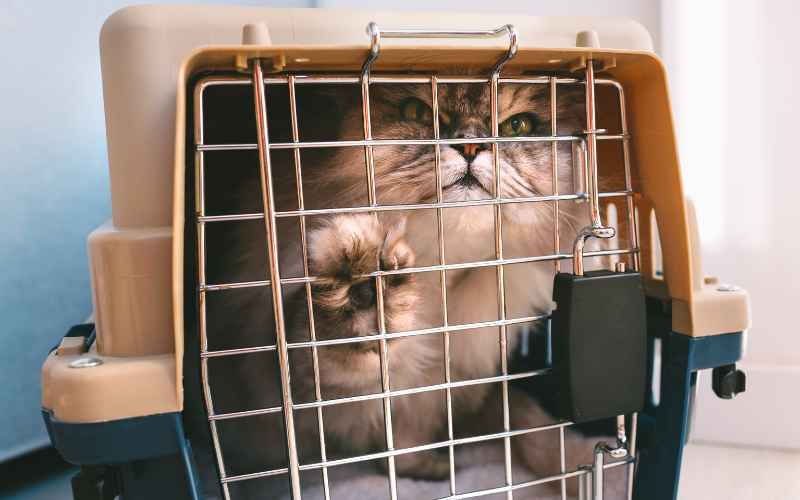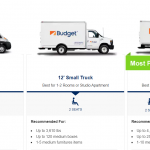So, you have done your homework to list down the costs of moving and estimated a moving budget. Now it is time to finalize the moving dates and shop for packing boxes and tapes.
But hold on. No matter if it is a DIY move or you are taking the support of a moving company, the process can involve a host of unexpected costs. And unless you take them into account, you may have to stretch your budget at the last moment.
Here is a list of the hidden costs of moving to help you to make your move as cost-effective as possible. Let’s get down to it.
1. Packing Supplies
Buying packing supplies for the move will consume a considerable amount of money. Obviously, the cost of packing supplies to move a 3-bedroom house will be more than a 2-bedroom or 1-bedroom one.
For example, corrugated boxes cost more than folding cartons. A rigid set-up box will cost even more. Other than that, you will need to buy items like bubble wrap, packing tape, packing labels, straps, trash bags, and furniture covers.
To keep the boxes secure and prevent any damage to your items, it is necessary to invest in quality packing materials. Besides, having all these items ready at hand will make the packing process a hassle-free experience.
Packing up a set of 40 to 50 boxes can easily cost between $150-200 which you need to fit into your budget. To move a 4-bedroom house, it can be as much as $400. Obviously, you can have the movers handle the packing for you to reduce the hassle. But that’s another unexpected moving cost you’ll want to plan for.
2. Fuel Expenses
Whether you are driving to a new destination, or planning to tow your car, you cannot avoid fuel expenses. This will depend on the distance and the weight you are hauling. With the fluctuating gas prices, DIY moving costs will depend a lot on the gas prices in your area.
A fully loaded will give you anywhere between 8-9 miles per gallon. If you consider a move from Dallas to Atlanta, which is around 800 miles, you will need 100 gallons of gas. Considering the average gas prices, that will cost around $370. The fuel costs to move cross country will be much higher.
One way to reduce fuel costs is to avoid summer when the gas prices are higher. You can also choose a route that goes around states where the gas prices are higher. In case the gas prices are too high to accommodate your budget, you might delay the move and wait for the prices to come down.
If you are using a mover, you can think of sharing the truck with another family making the same move. This will allow you to share the fuel costs too.

3. Utility Connection/Disconnection Fees
Arriving at a new home that is cold and dark is a depressing experience. It is important to get the electricity, gas, internet, and running water connections in your new home before you move in. At the same time, you need to disconnect these services from your old property.
The energy service provider in the state will charge a connection, disconnection, or meter reading fee. You may also need to submit an amount for a new connection application. If you are renting, contact the landlord or renting agency to transfer the energy account to your name. This process can also involve additional charges.
Additional expenses include payments for meter upgrades or special meter reads. The charges will vary depending on the location. In most cases, connection and disconnection fees are reasonable and are within the $10 to $50 limit. On the other hand, you will have to make deposits for new utility connections, which can be anywhere between $150 to $400.
When it comes to internet connections, transferring the connection to the new location is the best option. The transfer fees vary between the providers. If you are changing providers, there can be an additional termination fee.
4. Temporary Storage
In case there are some unexpected delays in the move, storage can become a necessity. Consider a scenario where you may need to stay in a hotel for a few days before getting the keys to your new house. This will need a temporary storage facility to keep your household items safe. However, keeping the items stored for extended periods can add up the costs quickly.
The cost of storage will depend on the storage space, location, and storage duration. A storage space in a city will cost more than one in a rural location. A self-storage facility that charges on a month-to-month basis is usually the best option.
Need Movers? Your Move, Your Choice

Instant Exact Cost for Your Specific Move
Agoyu’s AI technology give you quick, precise estimates. Scan your room, receive instant quotes from multiple movers, and confidently select the best option for you.
STEP 1 OF 3
or Have a Top Mover Call Me Now!
Do it the old fashion way! A top mover will call you to provide an instant quote over the phone or at your house!
5. Replacing or Repairing Damaged Items
Keep in mind that for a DIY move, there will be no insurance coverage. And no matter how carefully you pack the items, moving damage can always happen, adding to the hidden costs of moving.
In reality, almost any item can suffer the consequences of relocation. However, fragile items like glass, ceramics, musical instruments, etc. are more prone to damage than others. In the worst cases, furniture and electronic items can get damaged.
If you have the right tools and expertise, you can repair cracked ceramics and mask furniture damage. Still, replacing some seriously damaged items can become necessary. You may need to consider additional unexpected moving costs for taking the services of a repair/restoration company.
6. Pet Relocation Costs
The easiest way to save money while moving and relocating your pet is to do it in your own car. Not only will it reduce the monetary impact, but it will also be a fun road trip with your furry friend.
To arrange air and train travel for your pet, you will have to pay extra. In general, only cats and dogs are allowed on planes and trains. The average cost of long-distance relocation of a small dog by airplane can be around $1500.

Additionally, during the packing and unpacking process, it can be a good idea to board your pets. The charges will depend on the boarding facilities and the breed of your pet.
When it comes to international relocations for pets, arriving at ballpark estimates is a difficult task. There are multiple factors like the number of pets, the type and breed, and the travel distance to consider. Other costs include health certificate charges and vaccination costs. The minimum cost of flying a small cat or dog to a different country can be around $2300.
7. Lost Wages
While this is not a direct expense, it is a financial loss that you may have to incur while moving. If you are unable to get paid leaves from your company during the moving period, it will have a cost impact.
One way is to plan your move during the weekend to minimize the loss. However, unplanned scenarios may take up extra time during a move and make you extend your leave period.
8. Disposal Costs, Garbage, Etc
Keep in mind that you will be generating a significant amount of waste before and after the moving process. If you are decluttering before packing, there will be a lot of scraps that will need disposal. To clear the garbage you will need to hire a junk removal company or rent a dumpster.
Depending on the amount of junk you generate, a junk removal service can charge anywhere between $50 to $300. Renting a dumpster is a more flexible approach as you get a few days to sort through the junk. It can cost anywhere between $250 to $500 depending on the size and location of the dumpster.
9. Organizing and Home Staging
Organizing your move involves many hidden moving costs that are easy to forget. For example, you need to stock your fridge and pantry in your new home.
Starting the process from scratch can cost a lot more than you can imagine. Besides, you might order take out during the days of packing and unpacking. Additionally, you may need to take professional help to assemble large pieces of furniture in the new home.
If you are heading into a vacant house, home staging is an important step. Even a two-hour-long consultation with a professional home stager can cost you $500. For high-end homes, the total cost of home staging can be as high as 1.25 percent of the list price. On the plus side, staged homes sell faster than non-staged ones.
Frequently Asked Questions
What are the biggest unexpected moving costs?
The two biggest costs of moving are the moving truck rental and the process of transporting yourself and your family. Beyond that, there are expenses like moving insurance, packing supplies, and storage charges.
What is the cheapest way to move?
The cheapest way to move is to pack all the items on your own, stuff them in a vehicle, and drive to the new location. However, it takes a lot of time, energy, and skill to complete the DIY process smoothly without making any mistakes.
Is $5,000 enough to move?
It is difficult to pin down how much it costs to move as it depends on multiple factors. Moving a small apartment within a few hundred kilometers can be done with $5000. Larger, long-distance moves will cost more.
Final Thoughts
This list of hidden moving costs will help you to complete the move without overshooting your budget. At the same time, knowing about the hidden expenses will help you to trim the budget wherever possible.
That said, no matter how you account for the hidden costs of moving, be prepared to meet some surprise expenses when you are moving to a new location. Even so, with this list in hand, you can reduce the chances of getting caught off guard.
Ready to move? Get started with Agoyu!





